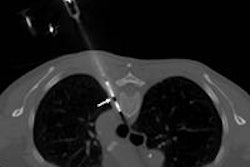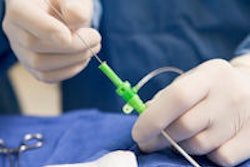Interventional radiology is playing a more significant role in improving the quality of life for people with diabetes, according to several speakers at the recent Cardiovascular and Interventional Radiological Society of Europe (CIRSE) annual congress in Glasgow, Scotland.
The speakers believe more patients can avoid foot or leg amputation if they are referred more quickly to specialist clinics for less invasive and potentially less expensive medical alternatives, such as interventional radiology.
According to one presentation, interventional radiology is performed using only local anesthetic and sometimes sedation in 9 out of 10 cases. Eight out of 10 procedures require skin incisions of less than 5 mm and 8 out of 10 patients can return home the same day.
Interventional radiologists primarily use x-ray, CT, and ultrasound to guide small wires and catheters through blood vessels and other pathways to administer diabetes treatment.
CIRSE believes that interventional radiology can potentially provide a less complication-prone alternative to open surgery for patients. It can mean shorter hospital stays, less risk, less pain, and shorter recovery times.



















